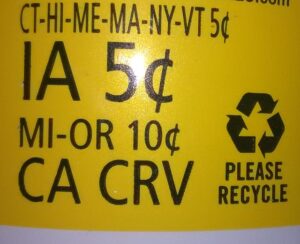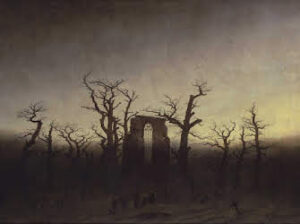A fascinating idea that I both encountered while studying in this course along with traveling throughout Germany was the vast recycling program (Pfand) that the country applies across all of its retail areas. In 2002, it was estimated that up to 3 million bottles were disposed of in landfills across Germany. To help with combatting this incredibly large amount of waste, Germany adopted the bottle deposit system. Whenever someone uses a bottle for single-use purposes (like purchasing a Coke, beer, or other personal beverage), you can return the bottle at the place of purchase for a small refund. The system is applied across different regions of the world; however, in Germany, the return rate of bottles is almost 98% of all recyclable bottles in the country (DW 2021).
Interestingly enough, in Germany, part of the Pfand system also consists of a unique way for the homeless population to find a semi-safe way of income. Under the recycling bins on the street, it is acceptable for someone who is unable to drop a bottle at a retail location for their refund underneath the recycling bin. Then, homeless/unemployed individuals who need extra income come around in the evenings and collect the bottles to take to the store and receive the deposit return on the bottles. In the end, it helps with both keeping the environment clean, reducing carbon emissions of producing new bottles, and helping put some money in the pockets of others.
When thinking about the United States’ recycling system, its disappointing to think about how far behind our recycling initiatives are across the country compared to countries like Germany. Interestingly enough, there are some US states who have a sort of Pfand system where bottles can be returned for a 1-5 cent refund (states like Maine, West Virginia, and Hawaii). California is the only state at the time of this writing that allows for a full-refund of the bottle’s value which is similar to the Pfand system in Germany.

A label from a refundable bottle in the US, with all of the values that states will refund if its returned to a store. (Source).
I think that a notable difficulty that is displayed in the above image of the back of a bottle is the difficulty of states in the United States to collaborate with one another for a universal system. For example, there are 7 states that have 5 cent refunds, 2 states with a 10 cent refund, and one with a Credit Retail Value (CRV) refund. Under the federalist system within the United States and with polarized politics, I could imagine that establishing a federal CRV system would be quite difficult (if at all plausible) for the United States.
Ruiz, I. B., & Cwienk, J. (2021, November 24). A look at Germany’s bottle deposit scheme – DW – 11/17/2021. dw.com. Retrieved May 7, 2023, from https://www.dw.com/en/how-does-germanys-bottle-deposit-scheme-work/a-50923039

